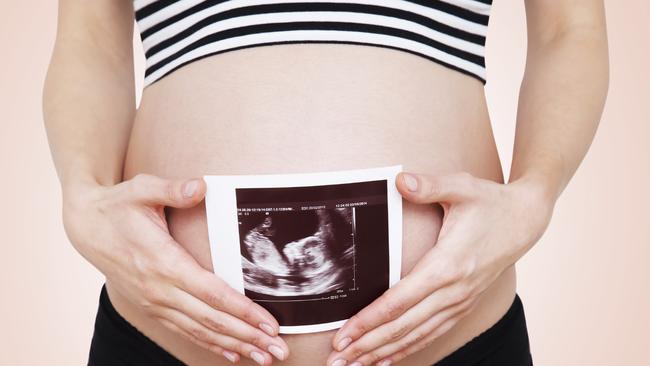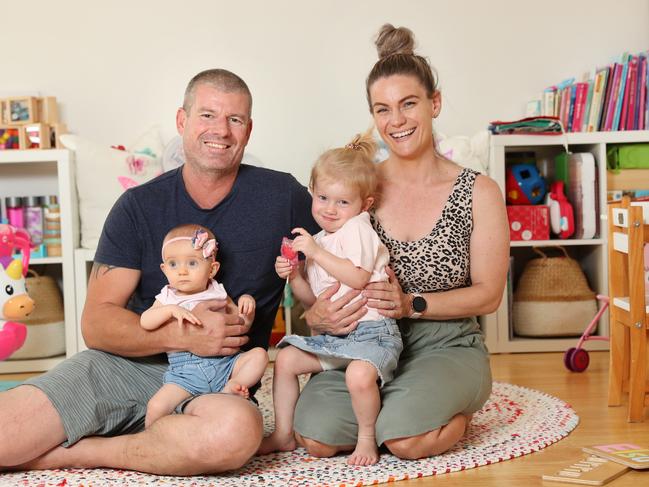New website gives Australians access to IVF clinic success rates
Not all couples may benefit from a new website listing the performance rates of IVF clinics across Australia.
National
Don't miss out on the headlines from National. Followed categories will be added to My News.
Australia has officially launched its first website where parents can search for the performance rates of individual IVF clinics – allowing greater transparency.
Couples will also be able to predict their chance of having a baby through IVF by entering their age and clinical details into a calculator on the YourIVFSuccess website.
The online aid means prospective parents will be able to get the same information presented the same way about every clinic, all in one place.
The statistics underpinning the tool – come from the University of New South Wales’s (UNSW) Australian and New Zealand Assisted Reproduction Data Base which records every IVF procedure ever undertaken in Australia.
Couples who have a reduced chance of success using IVF will be disadvantaged by the new website, a specialist group has warned.
The Australian and New Zealand Society of Reproductive Endocrinology and Infertility said the new website could make some clinics reluctant to offer treatment to such couples in order to maintain good pregnancy rates and couples may experience reduction of choice in their treatment options as a result.
“This government initiative will result in confusion, misinformation and potentially lead to reduction in access to treatment. Clinics with lower measures will scramble to change their statistics which may compromise access of some patients to care,” the organisation said in a media release.

Clinics in regional areas were disadvantaged because they had low numbers of patients and this could skew the data, the group claimed.
“If closure of a clinic occurs in a regional area it is particularly regrettable,” the group said.
It also argued the data used in the comparisons was several years old and does not reflect current practice and some clinics will have had lower measures in 2017 and taken action to address these..
Other factors that could influence the ratings were that some clinics had a special interest in offering donor sperm and therefore had a higher success rate than clinics who did not offer donor sperm at all or infrequently, the organisation said.
Some clinics carried out genetic testing which improved outcomes while others did not offer this service.
The number of eggs collected could also influence success outcomes.
The president of the group Dr Clare Boothroyd said it welcomed transparency but the “comparison between clinics is potentially misleading to consumers – it is like comparing apples with oranges”.
Of the 76 clinics that had been operating long enough to have their clinic success rates published, 92 per cent consented to have their results on the website.
Four measures of a clinics performance will be reported including the overall chance of having a baby from any egg retrieval and the chance of having a baby from the first ever egg retrieval.
For each measure the website compares the individual clinics performance to the national average success rate and it also compares success by age group given the age is such an important factor.
One in six Australian couples of reproductive age experience difficulties conceiving a child and Centre Alliance Senator Stirling Griff who led the charge for the release of the performance information said until now the industry had operated “as a secret society”.
Data held by the UNSW showed in 2017 the worst performing IVF clinic in Australia had a birthrate of just 9.3 per cent, while at the top performing clinic, more than a third of women took home a baby after treatment.
Until now the identity of those clinics had been kept secret.
Women younger than 30 have a 40 per cent chance of having a baby using IVF but for women over the age of 44, the live birthrate is just 0.8 per cent for a fresh cycle and 7.8 per cent for frozen embryos.

Senator Griff forced action on the issue in 2019 by proposing a law that would force clinics to publish the data.
“The reason I did it was that there were many instances of people I knew who changed clinic after a period of time and achieved success with going to a new clinic and so you start to think, why, what’s the issue here?” he said.
The $500 million industry is a huge cash cow and a News Corp investigation found some providers were charging parents desperate for a child three times the Medicare fee for IVF and nearly twice the AMA fee while keeping them in the dark on performance rates.
The IVF industry took part in developing the new tool which was worked up by the UNSW and funded by the federal government.
“The YourIVFSuccess website will help people estimate their chances of success through this treatment so that they can make the decisions which are right for them,” he said.
UNSW fertility expert academic Professor Georgina Chambers who developed the website said the four measures give a good overview of a clinic’s average success rates.
“But clinics treat different types of patients, and therefore patients should always consult with their doctor to discuss your own chances of treatment success and what treatment is right for them,” she said.
The chosen measures where developed so that they did not incentivise poor clinical practice.
“Australia is one of the safest countries in the world and we would not want to see more embryos being replaced to improve success rates or clinics only treating very good prognosis patients,” she said.
Maree Pickens, the CEO of patient support group Access Australia, welcomed the new website but said her organisation would be advising patients league tables were not a fair and accurate representation of the care and service provided by all clinics.
“It’s more than just success rates. An important consideration for many people is their clinic has to be accessible and convenient and offer services that allow them to fit their treatments and all the tests that they need to have into their working life, or if they’ve got children,” she said.
Dr Luk Rombauts the president of the Fertility Society of Australia and New Zealand said it was “unbelievably hard to compare units”.
“Some clinics might specialise in seeing women that have already done IVF, they failed somewhere else maybe in a cheaper clinic and now they want to pursue further treatment and if that’s the type of population you’re treating you of course can’t expect that that clinic will have the best success rates,” he said.
Fertility doctor Dr Fleur Cattrall, from Virtus Health, who has also had an IVF baby welcomed the transparency.
“Anything that will inform our patients is helpful but it doesn’t replace a personal conversation with a fertility specialist taking into account all your personal fertility factors,” she said.
“The website doesn’t take into account the male’s fertility factors, the length of time couples have been trying for or how low ovarian reserves are or if you need IVF for genetic reasons,” Dr Cattrall said.
Dr Cattrall said the publishing of a league table of success rates could discriminate against those clinics that take on higher risk patients.
The site includes success rates for 2017 and 2018 but later this year will be updated with 2019 data.
From 2022 it will be publishing the clinical pregnancy rates for 2021 and will be updated every six months.
‘WE WOULD HAVE TAKEN A DIFFERENT PATH’
It has been a long, heartbreaking and expensive 12-year journey for Heidi and Dean Stevens to realise the dream of becoming parents.
Mrs Stevens suffered endometriosis and polycystic ovarian syndrome as well as unexplained infertility.
Six miscarriages, three rounds of IVF and five implantations later baby Elsa was born in 2018 and her little sister Sianna was born last year.
“Elsa because she was obviously frozen and Sianna because Elsa had a sister Anna (in the movie Frozen),” Mrs Stevens, 42 said.
What the Werrington Down’s couple in Sydney’s west learned along the way is that not all IVF clinics are the same.
Mrs Stevens’ embryos had to undergo genetic testing to ensure a disease she carries – a degenerative gene known as HSP (Hereditary Spastic Paraplegia) which has a 50/50 chance of being passed onto her offspring and which has paralysing side effects – wasn’t passed on.

But different clinics have different technology and processes for the Pre-implantation Genetic Diagnosis (PGD) which she was unaware of.
“The technology is vastly different, the previous clinic did the PGD tested on day three of the six cell embryo by extracting two cells to do the genetic testing, but of those embryos I didn’t’ fall pregnant,” Mrs Stevens said.
The couple switched to Genea, which had a different technology for testing embryos, and had their first successful pregnancy in the first round.
“Genea didn’t test until day five and the embryo was not physically touched, and the test was done on stem cells spat out by the embryo, so they never touched my embryos,” Mrs Stevens said.
“My A grade embryo is Elsa today, she was never interfered with, was implanted and was my first successful pregnancy,” she said.
“My miracle is here,” she said through tears.
Mrs Stevens welcomes the transparency that will come with the new website.
“I think it is a compelling fundamental to the process, had I been able to pull out blanket information that compared apples with apples, I could have shortened my process and I could have honed in on my options more closely.
“Having the transparent information upfront, we would have taken a different path. It’s about informed decisions and being able to look at it side-by-side is really important.”
Originally published as New website gives Australians access to IVF clinic success rates


